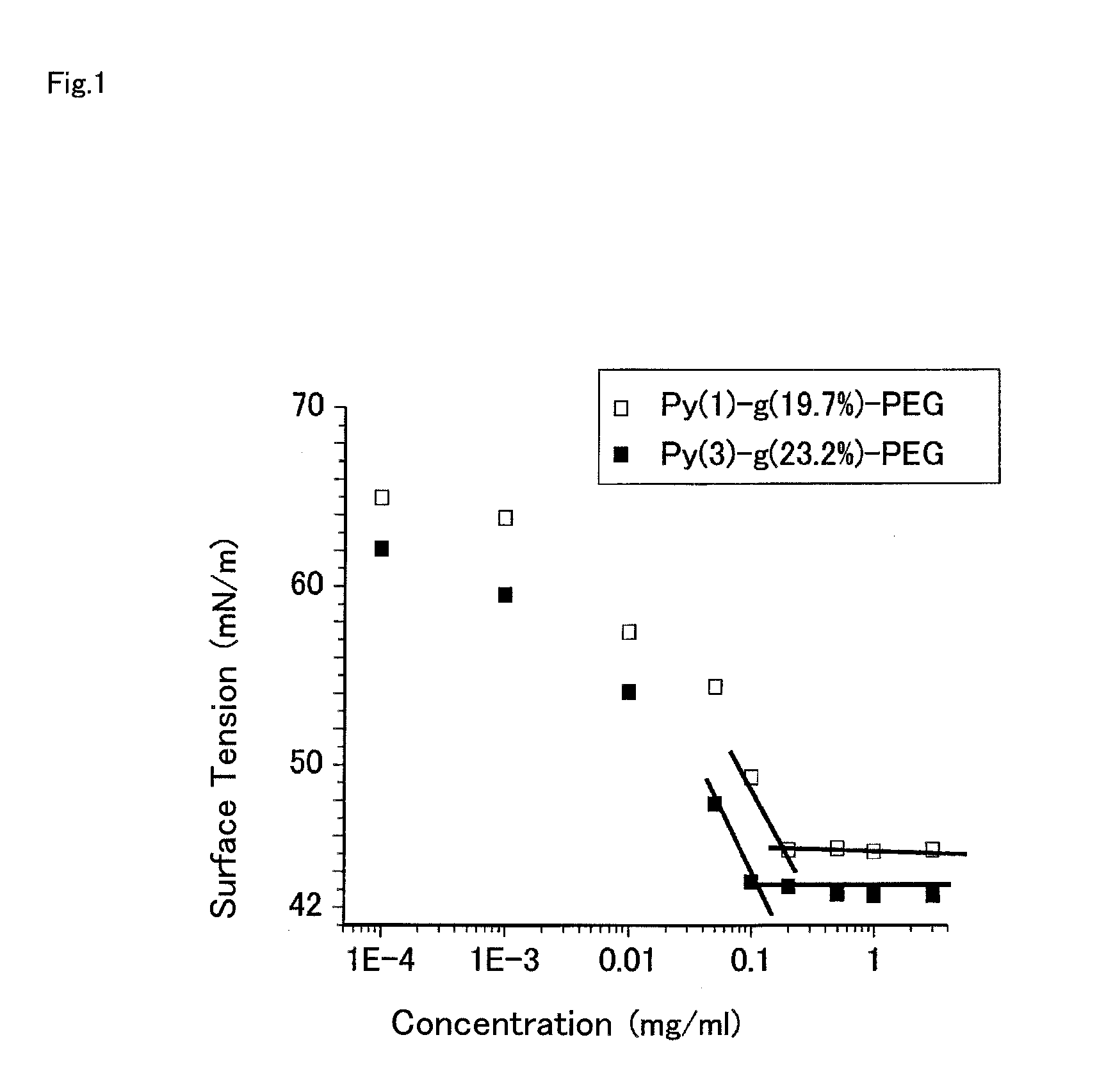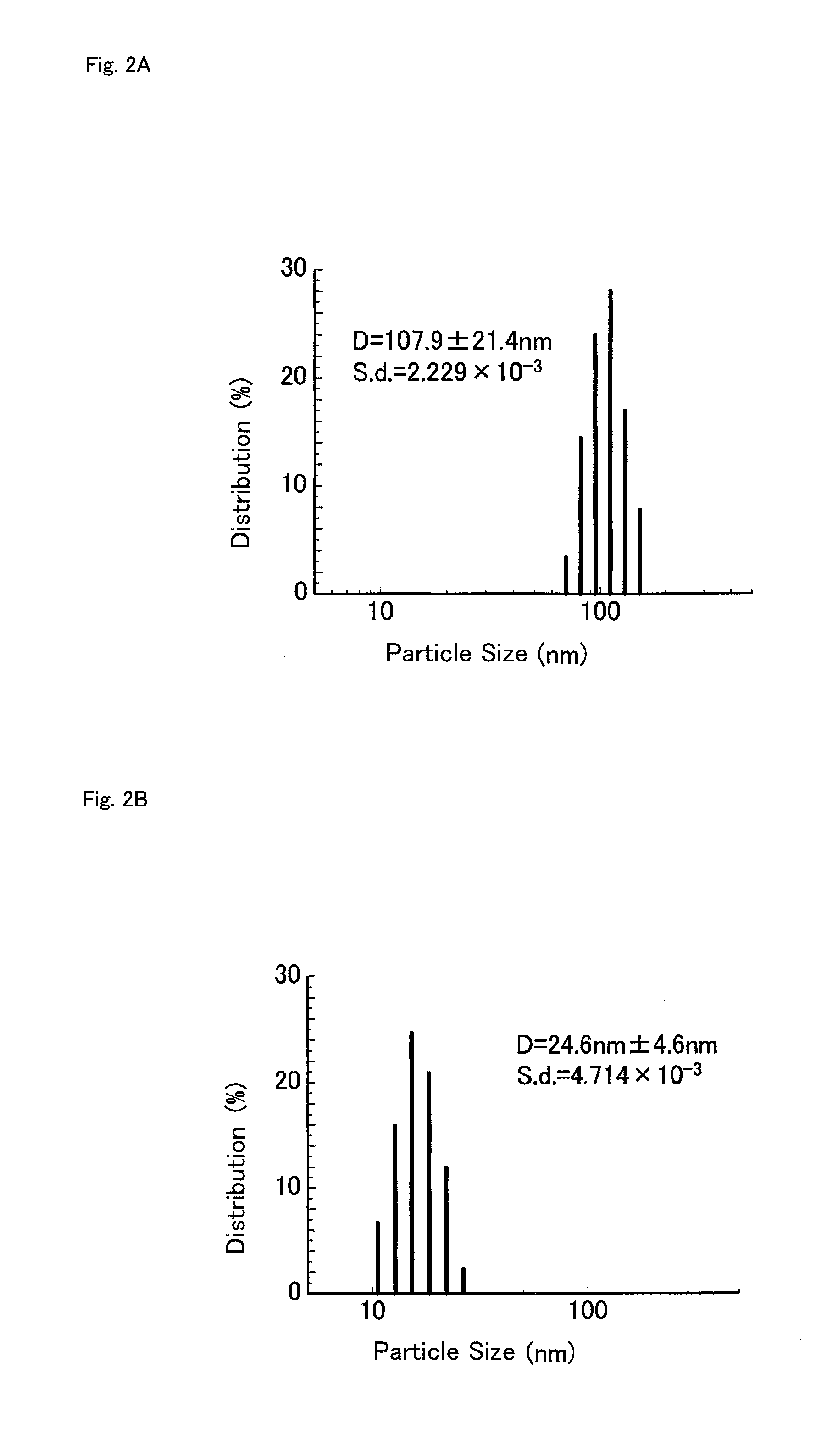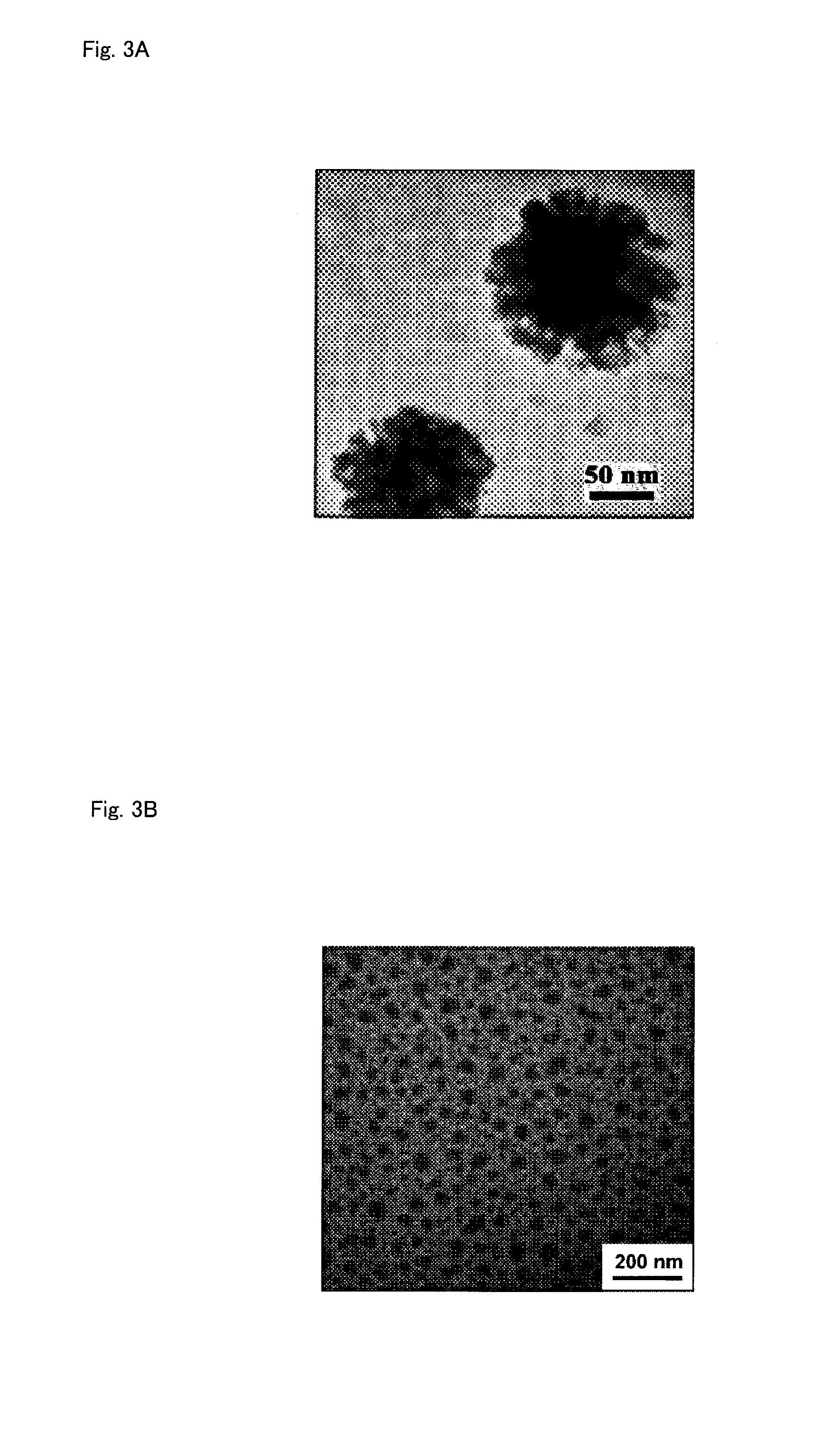Polymerizable Monomer, Graft Copolymer, and Surface Modifier
a polymerizable monomer and copolymer technology, applied in the field of polymerizable monomers, graft copolymers, and surface modifiers, can solve the problems of difficult grafting of polymerizable monomers having a thiol group, and achieve the effects of general versatility, stable particle size, and stable dispersion
- Summary
- Abstract
- Description
- Claims
- Application Information
AI Technical Summary
Benefits of technology
Problems solved by technology
Method used
Image
Examples
synthesis example 1
Case of Alkylene Group Having a Carbon Number of 1: m=1
[0119]After 5.45 g (50 mmol) of 4-pyridinemethanol (manufactured by Aldrich Co.), 4.73 g (55 mmol) of methacrylic acid (manufactured by Aldrich Co.), and 740 mg (5 mmol) of 4-(1-pyrrolidinyl)pyridine (manufactured by Aldrich Co.) were dissolved in 100 ml of anhydrous dichloromethane (manufactured by WAKO Co.), 11.3 g (55 mmol) of N,N′-dicyclohexylcarbodiimide (DCC) (manufactured by Aldrich Co.) was added thereto and allowed to react at room temperature for 1 hour. Then, insoluble urea was removed by filtration, followed by removal of solvent under reduced pressure. The residual material was purified by column chromatography (column: silica (manufactured by WAKO Co.), solvent: hexane / ethyl acetate) to obtain 8.1 g (46 mmol) of a colorless oil (yield rate: 91%).
synthesis example 2
Case of Alkylene Group Having a Carbon Number of 3: m=3
[0120]After 6.85 g (50 mmol) of 4-pyridinepropanol (manufactured by Aldrich Co.), 4.73 g (55 mmol) of methacrylic acid, and 740 mg (5 mmol) of 4-(1-pyrrolidinyl)pyridine were dissolved in 100 ml of anhydrous dichloromethane, 11.3 g (55 mmol) of DCC was added thereto and allowed to react at room temperature for 1 hour. Then, insoluble urea was removed by filtration, followed by removal of solvent under reduced pressure. The residual material was purified by column chromatography (column: silica (manufactured by WAKO Co.), solvent: hexane / ethyl acetate) to obtain 8.5124 g (41.4 mmol) of a colorless oil (yield rate: 82.8%).
synthesis example 3
Case of Alkylene Group Having a Carbon Number of 5: m=5
[0121]9-Borabicyclo[3.3.1]nonane (9-BBN) dissolved in 15 ml of tetrahydrofuran (manufactured by Aldrich Co.) was added to 300 mg (3.483 mmol) of 4-pentene-1-ol and allowed to react at 25° C. for 24 hours. Then, 4-bromopyridine hydrochloride (manufactured by Aldrich Co.) dissolved in water / dimethylformamide (DMF) at a ratio of 2:8, tetrakis(triphenylphosphine)palladium (manufactured by Aldrich Co.), and potassium carbonate (manufactured by Aldrich Co.) were added thereto in an equivalent ratio of 1:1.2:0.2 and allowed to react at 70° C. for 6 hours. Then, solvent was removed under reduced pressure, and the residual material was diluted with ethyl acetate and filtered with Celite. The material thus obtained was purified by column chromatography (column: silica (manufactured by Aldrich Co.), solvent: ethyl acetate / hexane) to obtain 203 mg of pyridinepentanol (yield rate: 48%). The reaction scheme is shown below.
[0122]After 110 mg (...
PUM
| Property | Measurement | Unit |
|---|---|---|
| Fraction | aaaaa | aaaaa |
| Fraction | aaaaa | aaaaa |
| Fraction | aaaaa | aaaaa |
Abstract
Description
Claims
Application Information
 Login to View More
Login to View More - R&D
- Intellectual Property
- Life Sciences
- Materials
- Tech Scout
- Unparalleled Data Quality
- Higher Quality Content
- 60% Fewer Hallucinations
Browse by: Latest US Patents, China's latest patents, Technical Efficacy Thesaurus, Application Domain, Technology Topic, Popular Technical Reports.
© 2025 PatSnap. All rights reserved.Legal|Privacy policy|Modern Slavery Act Transparency Statement|Sitemap|About US| Contact US: help@patsnap.com



